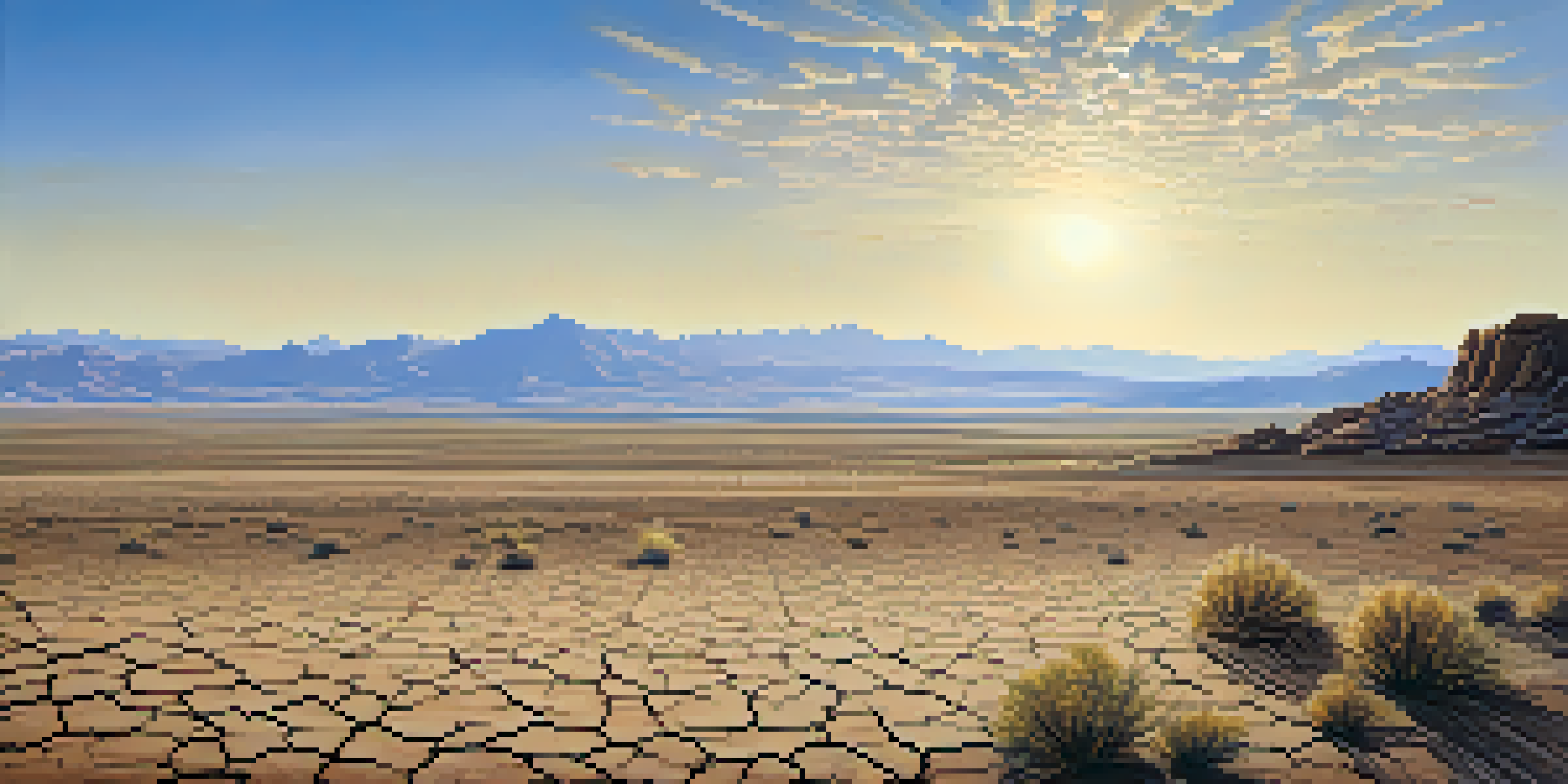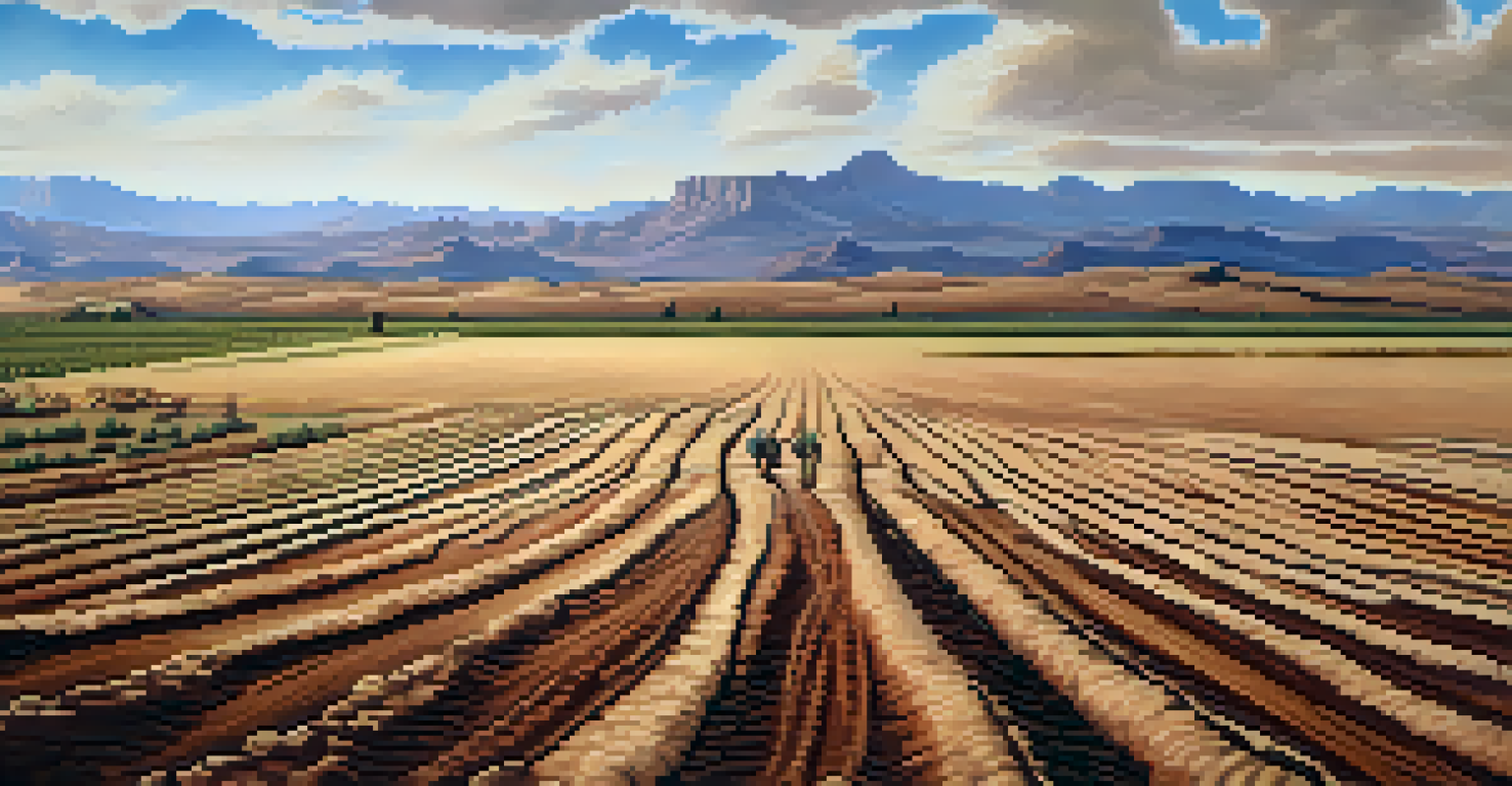Utah's Environmental Challenges: Droughts and Water Scarcity

The Reality of Droughts in Utah: A Deepening Crisis
Utah is no stranger to droughts, but recent years have seen this challenge escalate into a full-blown crisis. With the state's arid climate, water conservation has always been essential, yet changing weather patterns have made this even more urgent. The impact of prolonged droughts affects not just the environment but also agriculture, recreation, and daily life for Utah residents.
Water, water, everywhere, nor any drop to drink.
In fact, droughts in Utah have become increasingly severe, with many areas experiencing below-average precipitation for consecutive years. This has led to dwindling water supplies, stressing the already limited resources available for farming and urban use alike. As the state grapples with these conditions, it becomes clear that understanding this crisis is vital for the future.
The consequences of drought aren't just felt in one season; they ripple through the economy and ecosystems. For instance, farmers face crop failures, which can lead to higher food prices and reduced availability. Additionally, the natural landscapes, such as rivers and lakes, suffer, affecting wildlife habitats and recreation opportunities.
Understanding Water Scarcity: Causes and Effects
Water scarcity in Utah is not merely a result of drought but also a combination of factors including population growth and climate change. As more people move to the state, the demand for water increases, putting additional pressure on already limited resources. This growing population must be balanced with sustainable practices to ensure long-term viability.

Moreover, climate change plays a significant role in exacerbating water scarcity. Warmer temperatures lead to increased evaporation rates, which in turn affects water levels in lakes and reservoirs. These changes not only strain supply but also alter the timing and quantity of water available for various uses, complicating planning efforts.
Drought Crisis Deepens in Utah
Utah is facing an escalating drought crisis that threatens agriculture, wildlife, and daily life.
The effects of water scarcity extend beyond just immediate availability. It can lead to conflicts over water rights, affect local economies, and even threaten public health. Communities must adapt to these challenges through innovative solutions and conservation efforts to safeguard their water resources.
Agricultural Impact: The Lifeblood of Utah's Economy
Agriculture is a cornerstone of Utah's economy, and water scarcity poses a significant threat to this vital sector. Farmers rely heavily on irrigation to grow crops, and when water is limited, yields can suffer dramatically. This not only affects the farmers but also the local food supply and economy, creating a ripple effect.
We never know the worth of water till the well is dry.
In response to water scarcity, many farmers are adopting more efficient irrigation techniques and crops that require less water. For example, switching to drought-resistant varieties can help mitigate some losses. However, these changes require investment and education, which can be barriers for some agricultural operations.
The challenge lies in finding a balance between agricultural productivity and sustainable water use. As Utah navigates these waters, innovative approaches and community support will be essential to ensure that farming remains viable in the face of ongoing drought and scarcity.
Urban Water Use: A Growing Challenge
As Utah's population swells, urban areas are facing their own set of challenges regarding water use. Cities must find ways to supply water to residents while also promoting conservation practices. This growing demand can strain existing infrastructure and lead to higher costs for residents.
One effective strategy has been the implementation of water conservation programs that encourage residents to reduce their usage. For instance, rebates for water-efficient appliances and landscaping can make a real difference in daily consumption. However, widespread participation is crucial for these initiatives to have a meaningful impact.
Water Scarcity Drives Innovation
Innovative solutions like rainwater harvesting and efficient irrigation are essential to combat water scarcity.
Additionally, urban planning plays a pivotal role in managing water resources. By designing communities with sustainable practices in mind, cities can better handle their water needs while minimizing waste. This approach not only helps in the short term but also sets the stage for a more sustainable future.
Innovative Solutions: What Can Be Done?
Addressing Utah's water scarcity requires innovative solutions that tap into both technology and community engagement. For instance, rainwater harvesting systems can collect and store water for later use, providing an alternative source during dry spells. These systems are becoming increasingly popular among homeowners and can significantly reduce reliance on municipal water supplies.
Additionally, advancements in irrigation technology, such as drip systems, can help farmers use water more efficiently. These innovations not only conserve water but also improve crop yields, demonstrating that sustainability and productivity can go hand in hand. Collaboration between state agencies, farmers, and tech companies is vital to spread these practices.
Education plays a critical role in fostering a culture of conservation. By informing residents about the importance of water-saving practices, communities can work together to make a collective impact. Workshops, community events, and online resources can empower individuals and families to take charge of their water usage.
Community Involvement: A Key to Sustainability
In tackling Utah's environmental challenges, community involvement is crucial. Local organizations and residents can come together to advocate for sustainable water practices and policies that benefit everyone. Grassroots movements often lead to powerful changes, showing that collective action can make a difference.
Community initiatives, such as tree planting and cleanup days, not only enhance local environments but also foster a sense of connection among residents. These efforts can raise awareness about the importance of water conservation and inspire more sustainable lifestyles. When people feel invested in their communities, they're more likely to take action.
Community Engagement is Key
Active community involvement and education are crucial for promoting sustainable water practices in Utah.
Furthermore, engaging youth in these efforts creates future leaders who value sustainability. Educational programs that emphasize the importance of water conservation can instill a sense of responsibility in the next generation. By building a culture of sustainability, Utah can better navigate its water challenges in years to come.
The Path Forward: Balancing Needs and Resources
Finding a path forward in Utah's water management means balancing the diverse needs of its residents, agriculture, and natural ecosystems. This requires a holistic approach that considers long-term sustainability rather than short-term solutions. Collaboration among stakeholders is essential to create a comprehensive plan that addresses these complex challenges.
State officials, farmers, urban planners, and community members must work together to develop policies that promote water conservation and responsible usage. By sharing resources, knowledge, and best practices, Utah can establish a framework for sustainable water management. This collaborative effort is vital to ensure that all voices are heard and included in the decision-making process.

Ultimately, adapting to Utah's environmental challenges will require perseverance and innovation. By embracing new technologies, fostering community engagement, and prioritizing sustainability, the state can navigate its water scarcity issues while preserving its natural beauty for future generations.